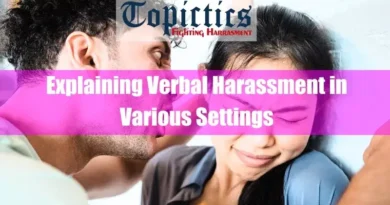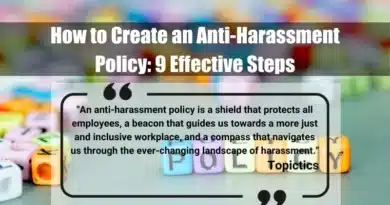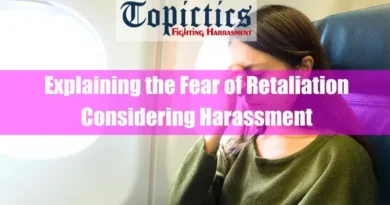The Role of Empathy in Harassment
Harassment is a harmful behavior that affects people deeply. It is a problem that exists in many areas of life, and understanding it is key to stopping it. Empathy, or the ability to understand and share the feelings of others, plays a crucial role in addressing harassment.
By fostering empathy, we can create a more respectful and supportive environment for everyone.
Takeaways
| Key Points |
|---|
| Harassment manifests in various forms—such as bullying, unwanted advances, and verbal abuse—and occurs in diverse settings like workplaces, schools, online platforms, and homes, often exploiting power imbalances and dehumanizing its victims through stereotyping and objectification. |
| It can target individuals based on race, gender, or sexual orientation, causing profound emotional and psychological harm, including anxiety, depression, and strained relationships, while also eroding community cohesion. |
| Empathy plays a vital role in combating harassment by fostering understanding and connection through cognitive, emotional, and behavioral awareness, empowering individuals to challenge harmful behaviors and promote respect. |
| However, empathy can be misused by perpetrators for manipulation, such as exploiting vulnerabilities, justifying harmful actions, or engaging in emotional blackmail, necessitating strategies like setting boundaries, maintaining focus on victims, and seeking external support. |
| By cultivating empathy at individual and community levels through education, inclusion initiatives, and bystander empowerment, society can reduce harassment, foster safer environments, and uphold dignity and mutual respect for all. |
Understanding Harassment and the Role of Empathy
A. What Is Harassment and Where Does It Happen?
Harassment takes many forms and can happen anywhere—at work, in schools, online, or even at home. It includes unwanted advances, bullying, and verbal abuse. Harassment often takes advantage of power differences and can make people feel unsafe and devalued.
Sexual harassment is one common form. It includes inappropriate comments, advances, or demands, especially in environments where people feel pressured, like the workplace. Online harassment can happen through cyberbullying, where people use the internet to spread hate and threats. In schools, harassment might involve physical aggression, exclusion, or online attacks that hurt young people emotionally.
Harassment can also be based on race, religion, or sexual orientation, targeting people for being different. In relationships, it might involve emotional manipulation or abuse that damages trust. No matter the form, harassment causes emotional and psychological harm, affecting victims deeply.
The effects of harassment are serious. Victims often struggle with anxiety, depression, and other mental health issues. This also impacts their work, creativity, and relationships. Harassment harms communities by creating division and encouraging negative behaviors. It’s clear that stopping harassment is important for everyone’s well-being.
B. How Empathy Helps Combat Harassment
Empathy is about understanding and feeling what someone else is going through. It helps us connect with others and respond to their needs with care and kindness.
There are three main parts of empathy: thinking about how others feel (cognitive empathy), sharing their emotions (emotional empathy), and taking action to help them (behavioral empathy). Empathy is important in all relationships because it builds trust and helps us communicate better.
Empathy becomes a powerful tool in the context of harassment. By understanding the experiences and feelings of others, we can challenge the behaviors that lead to harassment. When we empathize with victims, we see the harm that harassment causes and are motivated to stop it. By promoting empathy, we can create a culture of respect and understanding, making it harder for harassment to thrive.
Empathy is essential in the fight against harassment. By understanding others and caring for their well-being, we can create a safer, more respectful environment for everyone.
Understanding the Lack of Empathy in Harassment
Empathy is a core element of harassment. Understanding why this lack of empathy occurs is important to prevent and address harassment.
A. Dehumanization: Reducing People to Objects
Harassment often starts with dehumanization. This is when the perpetrator sees the target as less than human, making it easier to treat them badly. This happens in several ways:
- Stereotyping: Perpetrators judge people based on their race, gender, sexual orientation, or other group identities. They assume negative traits about the person because of these stereotypes. This justifies their harmful behavior.
- Objectification: Perpetrators see the target as just a body or a tool, not as a person with feelings and thoughts. This makes it easier for them to ignore the harm they cause.
- Microaggressions: These are small, often subtle, acts of prejudice. They can include jokes, slurs, or dismissive attitudes. Over time, these microaggressions convey that the target’s feelings and experiences do not matter.
The effects of dehumanization are serious. By denying the target’s humanity, the perpetrator justifies their harmful actions and continues the abuse. The target is left feeling isolated and silenced.
B. Moral Disengagement: Excusing Harmful Behavior

Perpetrators often find ways to justify their actions, avoiding responsibility for the harm they cause. This is known as moral disengagement. It involves several mental tricks:
- Blaming the Victim: Perpetrators shift the blame onto the victim, saying things like, “You can’t take a joke” or “She was asking for it.” This allows them to avoid feeling guilty.
- Downplaying the Harm: They label their actions as “harmless teasing” or “just messing around,” making it seem like the victim is overreacting.
- Justifying Dehumanization: They believe that since the target is less than human, they do not deserve the same respect as others.
These tactics allow the perpetrators to see themselves as good people, even while they harm others. However, this only perpetuates the cycle of abuse.
C. Bystander Apathy: The Danger of Inaction
Harassment often continues because bystanders do not intervene. This inaction can be due to several reasons:
- Shared Responsibility: When many people witness harassment, they often think someone else will act. This shared responsibility means no one ends up helping.
- Fear of Consequences: Bystanders may worry about being socially ostracized or facing retaliation if they step in, even if they disagree with the harassment.
- Misreading the Situation: Sometimes, bystanders may not recognize the harassment, mistaking it for playful behavior or believing the victim is to blame.
Bystander apathy is not inevitable. Understanding its causes and learning how to intervene can help stop harassment and build a culture of empathy and support.
Promoting Empathy: Strategies for Prevention and Intervention
With the roots of dehumanization and moral disengagement exposed and the chilling silence of bystander apathy acknowledged, we can now turn our attention towards cultivating empathy – the antidote to harassment. This section will explore strategies for promoting empathy at individual, community, and bystander levels, empowering us to build a future where respect and understanding prevail.
A. Building Empathy in Individuals:
Building empathy within ourselves requires consistent practice and an openness to vulnerability. Here are some key strategies:
- Perspective-taking exercises: Engaging in activities like role-playing or reading diverse narratives allows us to step outside our own experiences and see the world through another’s eyes.
- Active listening: Practicing attentive listening without judgment or interruption demonstrates respect and fosters a deeper understanding of another’s thoughts and feelings.
- Cultivating emotional awareness: Recognizing and naming our own emotions is crucial to understanding and responding to the emotions of others with empathy.
- Mindfulness practices: Techniques like meditation and mindfulness can help us cultivate present-moment awareness, reduce impulsivity, and increase our capacity for compassion.
By investing in our own empathetic abilities, we become better equipped to recognize and respond to instances of harassment, both as victims and as potential bystanders.
B. Encouraging Empathy in Communities:
Creating a culture of empathy requires collective effort. Here are some ways communities can foster empathy:
- Diversity and inclusion initiatives: Creating inclusive spaces where individuals from different backgrounds feel valued and respected lays the foundation for understanding and empathy.
- Empathy-based education: Integrating empathy training into school curriculums and workplace programs can equip individuals with the tools to recognize and respond to harassment effectively.
- Open communication and dialogue: Encouraging open dialogue about harassment, free from stigma and judgment, promotes understanding and collective responsibility for addressing the issue.
Cultivating a culture of empathy at the community level empowers individuals to act as agents of change, disrupting cycles of dehumanization and building a more supportive and safe environment for everyone.
C. Empowering Bystanders to Act:
Breaking the silence of bystander apathy requires equipping individuals with the skills and confidence to intervene. Here are some key strategies:
- Recognize the signs of harassment: Understanding the subtle and not-so-subtle cues of harassment is crucial for early intervention.
- Bystander intervention training: Programs that teach practical skills for safe and effective intervention empower individuals to act when they witness harmful behavior.
- Creating a culture of support: Building a community where reporting harassment is met with support and not blame encourages individuals to speak up and hold perpetrators accountable.
By empowering bystanders to become upstanders, we create a network of support that disrupts the power dynamics of harassment and protects vulnerable individuals.
The Misuse of Empathy in Harassment
While empathy is often hailed as the antidote to harassment, its role can be more nuanced than we initially think. In some cases, empathy can be weaponized by perpetrators, transforming from a shield against harm into a tool for manipulation and control.
A. Exploiting Vulnerabilities:

Empathy, as mentioned earlier, involves understanding and sharing the emotions of others. But this ability can be twisted by perpetrators to gain insight into their target’s vulnerabilities and exploit them for their own gain. Imagine a manipulative partner who feigns empathy to understand their partner’s insecurities, only to later use them to control their behavior or guilt them into staying in the relationship.
B. Justifying Harmful Behavior:
Empathy can also lead to an unintended consequence: justifying the harasser’s actions. By understanding the perpetrator’s motivations, past experiences, or emotional state, we might empathize with their pain or frustration, inadvertently minimizing the harm they inflict. This can lead to victim blaming, where the focus shifts to the perpetrator’s struggles, overshadowing the victim’s suffering and diminishing the gravity of their experience.
C. Emotional Blackmail:
Another manipulative tactic is emotional blackmail. Perpetrators might exploit their target’s empathy by threatening to harm themselves or others if they speak up about the harassment. This creates an impossible situation for the victim, who feels responsible for the perpetrator’s well-being and is trapped in a cycle of compliance and silence.
D. Preventing the Misuse of Empathy:
Recognizing the dark side of empathy is crucial to combatting its misuse in harassment. Here are some strategies to navigate this complex terrain:
1. Maintaining clear boundaries:
While empathy is important, it shouldn’t come at the expense of setting and upholding healthy boundaries. It’s okay to prioritize your own well-being and refuse to engage in conversations that feel manipulative or emotionally draining.
2. Separating understanding from condoning:
Recognizing the perpetrator’s motivations doesn’t excuse their actions. We can strive to understand without condoning the harm they inflict.
3. Focus on the victim’s experience:
Keep the focus on the victim’s perspective and the impact of the harassment on their life. Their feelings and well-being should be the central concern, not the perpetrator’s emotional state.
4. Seek support and guidance:
If you’re unsure how to navigate a situation where empathy seems to be used manipulatively, seek support from trusted friends, family, or professional counselors.
By acknowledging the potential pitfalls of empathy, we can ensure that this powerful tool is used for good. Empathy empowers us to build a world where it fosters healthy connections, not manipulation and control. Remember, true empathy involves not only understanding the emotions of others but also upholding their right to dignity and respect.
Building a Future with Empathy
Creating a future free from harassment requires a collective effort. We must focus on nurturing empathy, making it a strong force that can protect against harm and indifference. Imagine a world where everyone’s voice is valued, schools are inclusive, and online conversations are respectful. We can all act as bystanders, using empathy and courage to stop harassment and support victims. However, as we work towards this future, we must also address the pain caused by past wrongs.
Healing is possible both individually and as a society. With understanding and support, we can ensure that past hurts do not lead to future injustices. While there will be challenges, our commitment to empathy can help us overcome them, leading to a world where everyone is treated with dignity and respect.
This is our call to action. We must nurture empathy in ourselves and our communities. By choosing understanding and compassion, we can create a future where respect and dignity are the norm.
Through empathy, we can remove the harms of harassment, creating a world where everyone has the opportunity to thrive.
FAQ
What is the empathy gap in harassment?
The empathy gap in harassment refers to the disconnect between understanding or feeling another’s emotional state, which can lead to minimized recognition of harm. This lack of emotional resonance often results in insensitivity and perpetuates abusive behavior, as individuals fail to appreciate the impact of their actions on others.
How does cognitive empathy deficit affect harassment?
A cognitive empathy deficit is a reduced capacity to understand another person’s perspective or mental state, which can blur the recognition of social boundaries. This shortfall often contributes to misinterpretations and justifications of harassing behavior, as the individual cannot fully grasp the emotional consequences of their actions.
What is affective empathy impairment in harassment?
Affective empathy impairment describes a diminished ability to share and respond to the emotional experiences of others, leading to an emotional disconnect. In harassment contexts, this impairment prevents individuals from truly feeling the distress of their victims, which can embolden harmful conduct.
What role does emotional contagion play in harassment?
Emotional contagion is the process by which individuals unconsciously mimic and synchronize their emotions with those around them, influencing the overall emotional climate. In harassment situations, negative emotions can spread rapidly, intensifying aggressive behaviors and creating a feedback loop that sustains conflict.
How does mirror neuron function contribute to empathy in harassment?
Mirror neuron function is fundamental to how humans instinctively replicate and understand the emotions and actions of others, forming the biological basis for empathy. When this system is underactive or compromised, it can impair the natural inhibition against harmful behavior, thereby increasing the risk of harassment.
What is social cognition bias in harassment contexts?
Social cognition bias involves systematic errors in interpreting social cues and intentions, which may lead to misjudgments during interactions. This bias can distort perceptions and understanding, making it easier for harassing behavior to be rationalized or dismissed by those involved.
How does reduced interpersonal sensitivity influence harassment?
Reduced interpersonal sensitivity means a decreased ability to detect and respond to the emotional signals of others, often resulting in dismissive or inappropriate interactions. This lack of attunement can facilitate harassment, as individuals may overlook the distress signals that typically discourage harmful conduct.
What are perspective-taking limitations in harassment cases?
Perspective-taking limitations refer to difficulties in accurately imagining or understanding another person’s point of view, which is critical for empathetic engagement. Without this ability, individuals may fail to recognize the emotional damage their actions inflict, thus perpetuating harassment.
How is empathic accuracy measured in harassment research?
Empathic accuracy is gauged by assessing how precisely an individual can infer another’s emotions and thoughts, often through standardized tests and observational studies. This measure is essential in understanding the link between accurate emotional perception and preventing harassing behavior.
What is the role of affective dysregulation in harassment?
Affective dysregulation is the inability to manage and modulate emotional responses effectively, which can lead to impulsive or aggressive reactions under stress. In harassment contexts, such dysregulation undermines the capacity for controlled behavior and empathy, thereby exacerbating conflict.
How does compassion fatigue relate to harassment dynamics?
Compassion fatigue is the emotional exhaustion that arises from prolonged exposure to the suffering of others, reducing one’s capacity for empathy. This state can distort interpersonal interactions and lower defenses against harassing behavior as individuals become less responsive to emotional cues.
What are the outcomes of empathy training on harassment prevention?
Empathy training aims to enhance both cognitive and affective empathy, promoting a deeper understanding of others’ emotions and reducing tendencies toward harassment. Evidence suggests that structured training can lead to significant improvements in interpersonal interactions and a measurable decline in abusive behavior.
How does emotional labor impact harassment situations?
Emotional labor involves the effort required to manage and express emotions in line with social expectations, often placing undue strain on those who must regulate their feelings under pressure. In harassment contexts, the constant need for emotional management can leave individuals vulnerable, compounding stress and potentially triggering further conflict.
What strategies are involved in empathetic communication for harassment resolution?
Empathetic communication focuses on active listening, clear expression, and validation of emotions to foster mutual understanding and de-escalate conflicts. By integrating these strategies, individuals can create a more respectful dialogue that helps prevent and resolve instances of harassment effectively.
What challenges arise in self-other differentiation in harassment contexts?
Self-other differentiation is the ability to distinguish between one’s own emotions and those of others, a critical skill for maintaining healthy boundaries in social interactions. When this differentiation is blurred, individuals may misinterpret emotional signals, inadvertently contributing to or escalating harassing behaviors.









